Recently, I met with Ji Zhiping when he accompanied Taiwanese ceramic artisans to visit his studio. As an individual born in the 1980s, he already has a sense of maturity. When asked about the reason, he mentioned that in just over a year, he personally led the design and construction of the Yuyao and Longyao studio, from clearing the land, preparing the clay, sketching the dragon kiln, to starting the construction.
Senior Tenmoku enthusiasts are no stranger to Ji Zhiping, who is one of the outstanding younger generations in Tenmoku firing. He apprenticed under the provincial master Xu Jiayou and has created many classic works, attracting much attention. After disappearing from public attention during his peak, he resurfaced after more than a year of silence to build a 22.8-meter-long dragon kiln covering over 2,000 square meters in his hometown of Yuyao Village.
After introducing the Taiwanese artisans, we began to visit his dragon kiln. The studio is located in his childhood hometown, where the kiln ruins are also located. His studio can be seen from the Shuiji Expressway exit. The imitation Song Dynasty dragon kiln, built into the mountains, is located on the left side, adjacent to the work area where Tenmoku's traditional crafting process is presented. Under the dragon kiln, it is cool and pleasant like autumn, even in the 40-degree high temperature.
The dragon kiln is designed to imitate the Song Dynasty's integrated dragon kiln design, with a total of 16 levels of openness from bottom to top. This design helps to increase the potential for diversity in the works produced, while the complex atmosphere of the large space presents great technical challenges for firing.
In general, the temperature of the dragon kiln during wood firing is mainly judged by the color of the flames and the placement of the fire marks at the firemouth, which form a unique observation and temperature measurement system based on accumulated experience. Compared with contemporary technology, this system is not precise, but it is the most valuable reference. Ji Zhiping also adjusts the kiln temperature based on this unique observation mode.
From a craft perspective, the preparatory processes for wood firing and electric firing are roughly the same. However, the preparatory work for wood firing is more complex and important, from loading the kiln to the firing process. Activities such as washing the clay, preparing the firewood, throwing the pot, glazing, and loading the kiln are carried out in an orderly manner next to the dragon kiln.
Unlike electric kilns, Ji Zhiping uses the traditional wood firing method and needs to make an equal amount of clay pads to be used as supports for the pots to prevent them from sticking together. These preparations are necessary for the official firing on the 16th of this month. Although these tasks are somewhat complex, they are not unfamiliar to him. Years of experience in firing Tenmoku with electric kilns have provided him with rich practical experience. The previous two dragon kiln trials have made Ji Zhiping much more relaxed now.
The loading of the kiln is currently in progress, and valuable experience has been gained from the previous two trial firings. Straw ash is spread in the box and a pad made of straw ash is placed to prevent sticking. A level is used to measure the level of the box to prevent the finished product from being warped. Warping was common in Song Dynasty Tenmoku due to balance issues with the box or kiln during high-temperature firing, but this can be avoided with careful measurement. Once these steps are completed, the kiln can be loaded and fire marks can be placed at the firemouth. Then, the kiln can be sealed and waiting for firing.
So far, the steps of selecting clay, choosing minerals, washing clay, grinding, kneading, glaze preparation, throwing, trimming, biscuit firing, glazing, preparing the box and pads, loading the kiln, and sealing the kiln are all completed. Everything is ready, waiting for the rebirth of the phoenix from the ashes, presenting colorful and rustic works.
With everything in place, Ji Zhiping's mentor Xu Jiayou came to assist and guide, igniting the flame of the dragon kiln's heritage. Ji Zhiping took over the baton of inheritance from his mentor Xu Jiayou and embarked on the path of Tenmoku's inheritance. Chen Xing, his apprentice, is shown on the right in the photo.
In fact, the essence of the dragon kiln works lies in the firing process at high temperatures after sealing the kiln. The Tenmoku embryos inside the kiln are like hungry babies, waiting to be nurtured by the artisans and transformed into their final forms. After 36 hours of uninterrupted firing and a week of insulation and cooling, each Tenmoku emerges with its own beautiful and fascinating appearance, waiting to be discovered in the warm afternoon sunlight of a tea room.
After ignition, the firing process continues uninterrupted for more than 36 hours.
Building a studio of this scale is quite unexpected. The two-story building, which combines exhibition halls, reception areas, and living quarters, was renovated from an 80s-style building and provides a glimpse into the process. This type of family workshop environment is similar to the living conditions of mainstream artisans.
I don't remember which famous teacher said it, but traditional large-scale production cannot resist the personalized and humanized works created by small workshops or small groups with certain skills. Whether in Japan, Taiwan, Jingdezhen, or elsewhere, the works of artisans are never produced on industrial production lines.
"My home is here, my work is here, and Tenmoku accounts for a relatively small proportion of Chinese ceramics. There are many excellent artisans around the world who use different techniques to create outstanding works. Setting up the studio in my childhood hometown, which is also my roots, allows me to build a platform for domestic and international ceramic artists to exchange ideas and collaborate. It provides space for visiting artisans to experiment. Only in this way can I deepen my understanding of ceramic culture and elevate my thinking and perspective on firing Tenmoku," said Ji Zhiping when planning his studio.
Specialization leads to excellence. Ji Zhiping has had many years of experience in electric firing, using electric kilns to fire Tenmoku and interpret the unique beauty of the craft through the expression of patterns, shapes, and line tension. However, his wood-fired trial works are different. They have the unique luster and natural texture of wood firing, as well as a rustic and elegant temperament. Wood firing emphasizes simplicity and restraint compared to the tension of electric firing, and it embodies the natural and elegant solemnity given by the dragon kiln wood firing, with a natural and heavy historical and vicissitudes atmosphere on the tea table. This is also why he is willing to spend more than a year carefully building the dragon kiln.
Holding a wild rabbit hair brush.



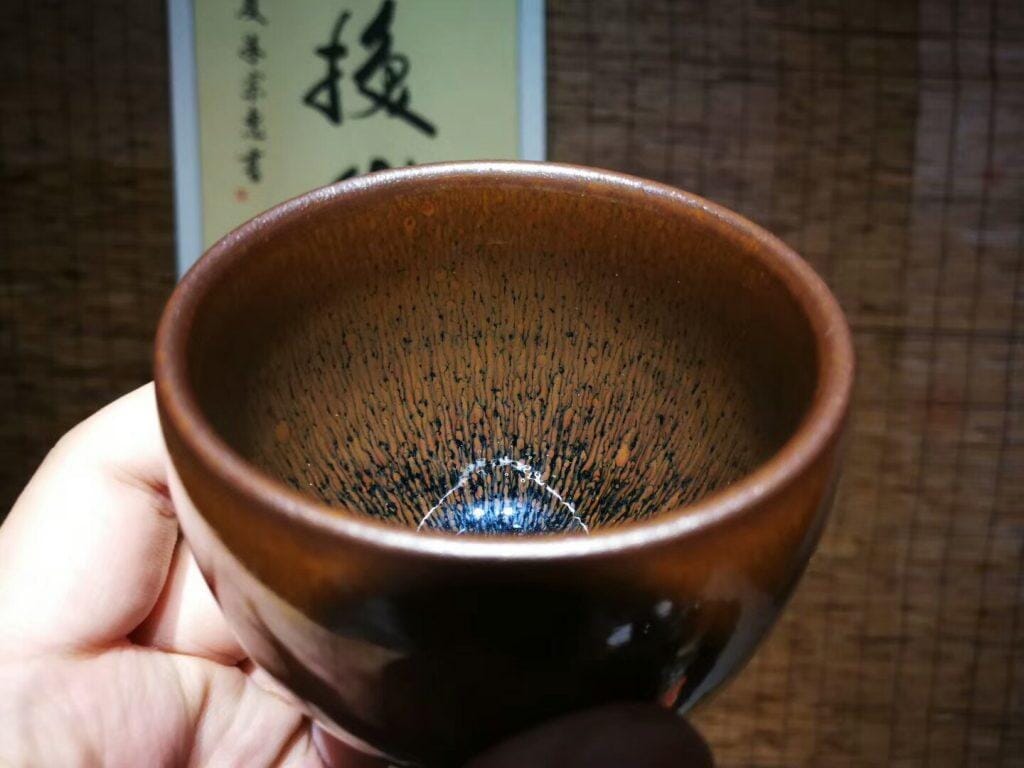
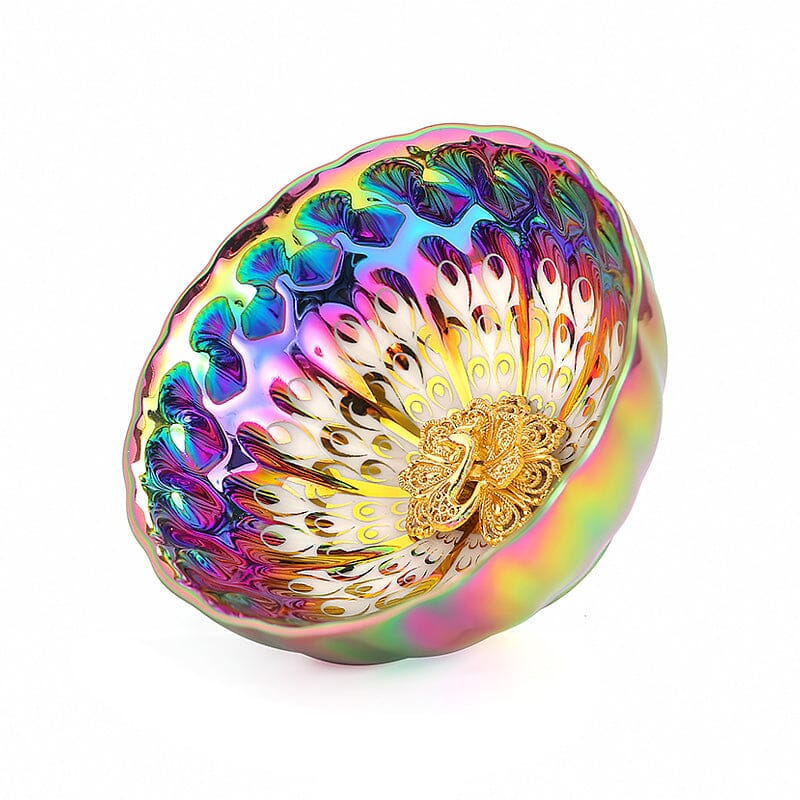
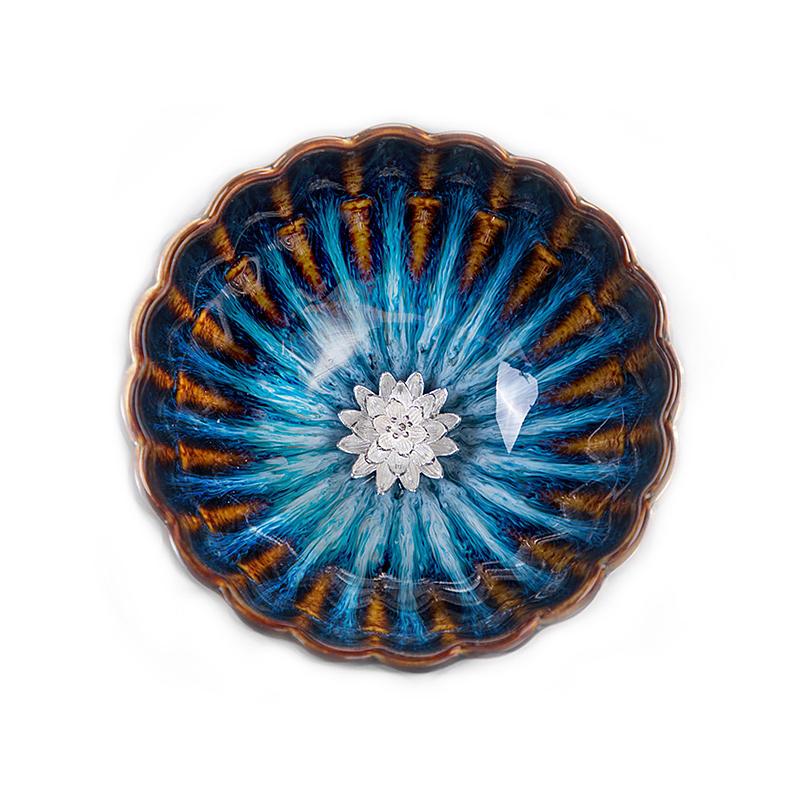
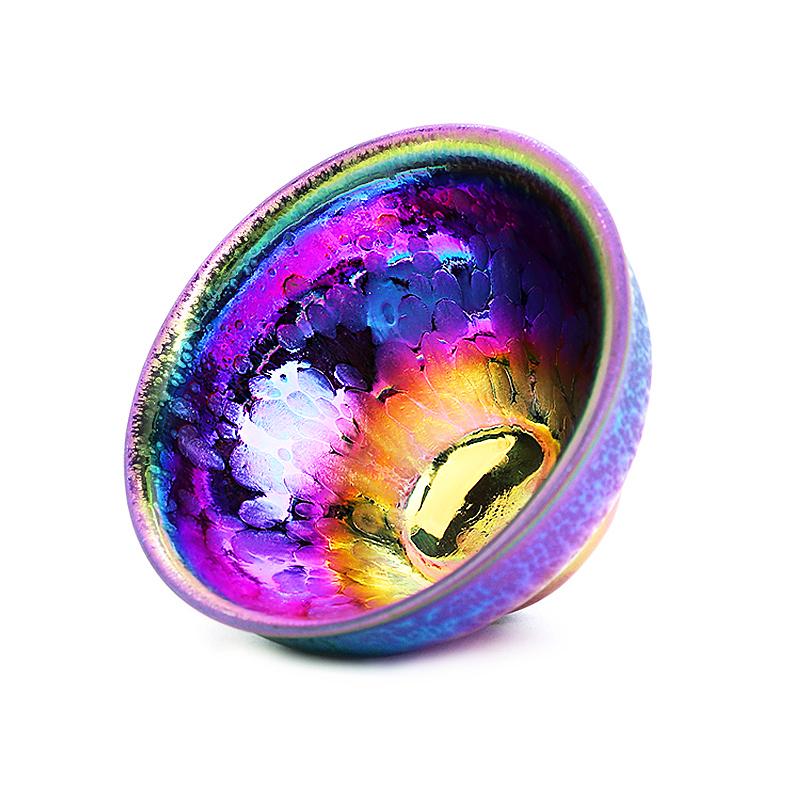
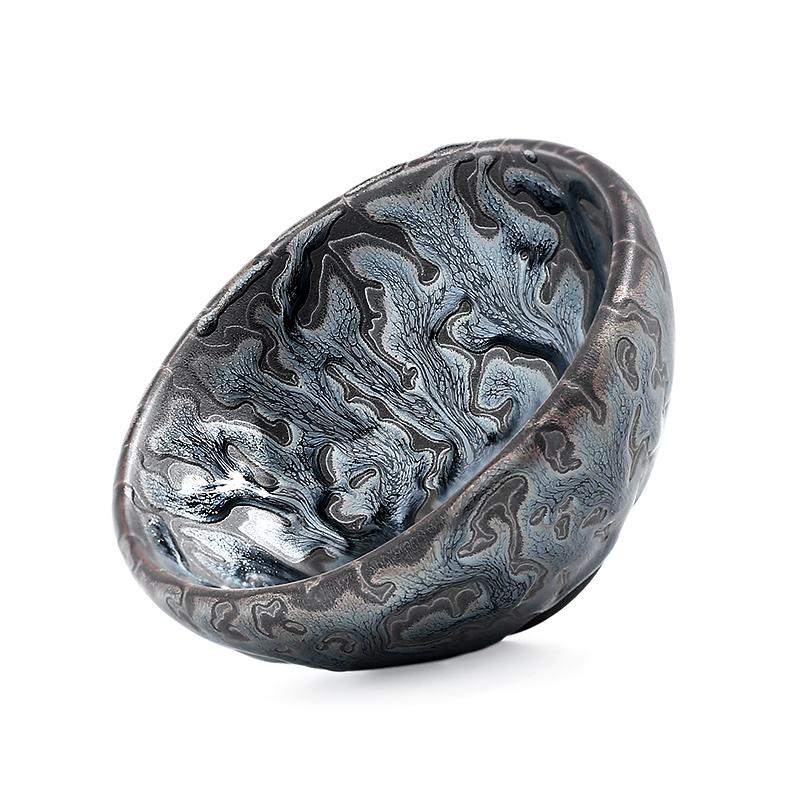
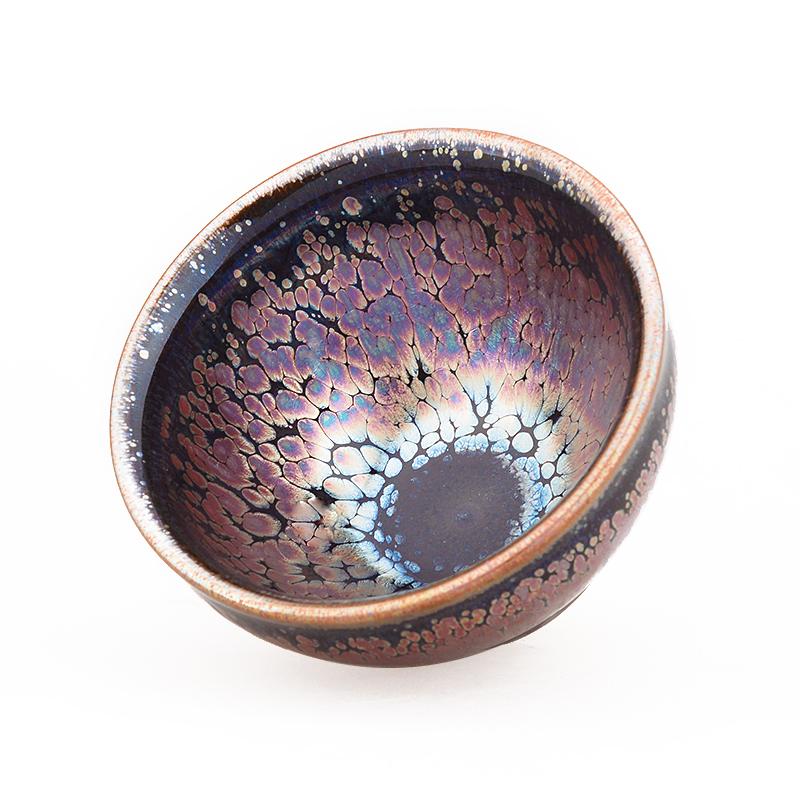
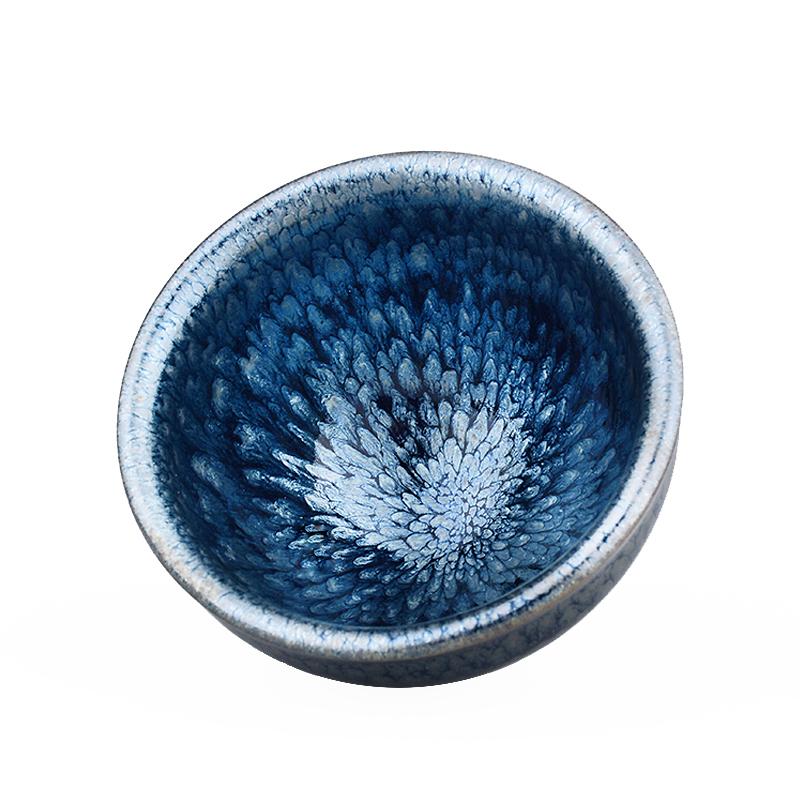
Share:
Understanding Tenmoku is not difficult
Chinese Ceramics: White, Celadon, Black, and Iconic "Tenmoku"